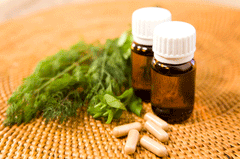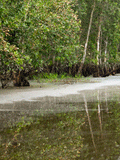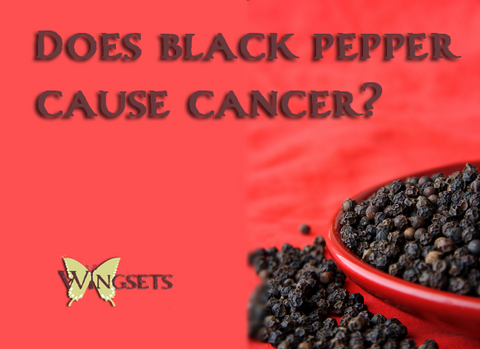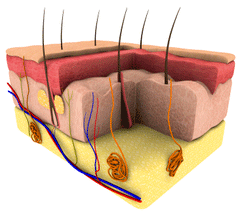Can Ylang-ylang reduce blood pressure?

Interestingly, I received on two consecutive days questions about the use of essential oils and their potential affect on someone's blood pressure. I knew from a post-surgical emergency with my husband several years ago that, yes, they can. After that fairly scary incident (and I don't scare easily after working in the ICU for 10 years), I decided to do more research and see if this was an isolated case or if this was common. First, let me just say that aromatherapy information on the internet has become extremely contradictory and often just plain ridiculous. This blog, of course, is on the internet, but I would urge you to consider the certification and/or education of any author of this information, whether they have an international aromatherapy affiliation such as NAHA or AIA and/or how many years of experience they've had in the use of essential oils. These little miracles of nature are concentrated and powerful and can be very useful when used correctly.
What is a normal blood pressure?
If you're reading this article, you probably already know what your blood pressure readings are and/or what they should be. These proposed ideal numbers have fluctuated somewhat over the years (not as drastically as cholesterol!), but basically the top number (systolic) should be no greater than 120, and the bottom number (diastolic) should be no greater than 80; i.e., 120/80 mmHg. I've provided links below that give good information about hypertension, which is not the subject of this article.
What causes high blood pressure?
I know - I said this article wasn't about hypertension, but it's very important to understand the causative factor for any blood pressure that falls outside of the normal range - regardless of whether it's hypotension (low blood pressure) or hypertension (high blood pressure.) While doing additional reading concerning the use of essential oils for blood pressure, I continuously found that a lot of practitioners attributed hypertension to anxiety and treated it accordingly. This is not the only reason for high blood pressure, and most certainly is not the reason for chronic hypertension. We had what we called "white coat hypertension" in the hospital on a regular basis - the patient was anxious when seeing the white coat of a physician. In this type of situation, yes, a calming essential oil such as lavender would be very effective. But, blood pressure can also be caused by the fact that heart muscle is damaged, the blood vessels are damaged, there is too much fluid retention - many reasons that are, I believe, outside of the realm of aromatherapy practice. You should have seen your doctor by now and you will probably be on pharmaceutical medication. I'm not a fan of pharmaceuticals, but they are advantageous in many situations. However, a quote from Dr. Allen Roses, a vice president for Glaxo Smith Kline: "The vast majority of drugs - more than 90 % - only work in 30 to 50 % of the people." Those are not very good odds considering the very high numbers of side effects. Most cardiologists will tell you that treating hypertension with drugs can involve frequent drug changes, all of which have side-effects, many of which do decrease your quality of life. Again, this is one of those times that any efforts to use essential oils to lower blood pressure, must be done with the approval and cooperation of your physician, in conjunction with an experienced clinical aromatherapist.
That being said, there are case studies showing that the use of certain essential oils have, in fact, resolved high blood pressure. We don't know, however, the causes in most of these cases, but some are obviously due to anxiety or fear. We all know the flight or fight response that causes us to have increased heart rate, but high blood pressure is not so obvious and can be a "silent" killer with no side effects or symptoms. Which is why I am adamant that anyone who is trying to control hypertension or change their medication for any reason should be able to keep a very close track of their blood pressure at home and continue to monitor at least four times a day. Your doctor who gives you a beta blocker to take at home probably won't tell you that or that you should also keep constant track of your heart rate as beta blockers, such as Metoprolol, can also cause your heart rate to decrease, sometimes drastically.
My Case Study:
My husband, Warren, went in for outpatient nasal septum repair for a broken nose from an old injury. Past medical history fairly benign except for back skeletal problems and what I call a "creeping" blood pressure. We went to the hospital where I had worked as a nurse for 12 years and I knew and trusted most of the nurses on staff there. He went through the surgery fine, came back to the outpatient cubicle where I was waiting and it was immediately apparent that his blood pressure was very high. I don't remember the exact number (it's written down somewhere...) but it was over 220/120 - not good. I also knew the anesthesiologist who was covering him that day and trusted him from years of working with him. He began to order a strong IV (intravenous) beta blocker, which was the routine drug of choice in that situation at that time. Normally, we would give 5 to 10 mg doses and check the blood pressure, and repeat maybe 3 times. We reached the maximum dose that could be given fairly quickly (I thought) as I sat and watched what I knew to be a hypertensive crisis and that is was very dangerous. After many doses and what seemed like forever to me (Warren was pretty much sedated at that point), the anesthesiologist wanted to admit Warren to the hospital. I frankly didn't. He (the anesthesiologist) had worked with me and knew I was a cardiac nurse and could take good care of him at home. He gave us a prescription for an oral beta blocker. Now, in this situation, the blood pressure could probably have been due to pain and anxiety, but Warren has had high blood pressure in the past, but not nearly this high. For this reason, I was concerned about why it was staying so high for so long. Also, by this point, he had been given enough pain killers to knock him out and getting him out the door and into the car was not easy. Point being, pain and anxiety were not the issue causing the hypertensive crisis. Nevertheless, we got him into the car, got the prescription filled and went home. I immediately began to rub his feet and hands with a dilution of jojoba oil (closest at the time) and Ylang-ylang (Cananga odorata) essential oil. I got out my stethoscope and blood pressure cuff and took his blood pressure about 5 minutes later. It had already come down into the 150/90 range - still not so good though. I didn't try lavender, though I'm pretty sure that would have helped with the pain and anxiety. I also put the ultrasonic diffuser by his bed and began to diffuse the Ylang-ylang as well. It did finally come down to a normal range within an hour or two. He never did have to start the blood pressure medicine. Why?!
Why Ylang-ylang?
Why did I, in this time of panic and fear, grab immediately for the Ylang-ylang? Most aromatherapists have read that Ylang has been used in other case studies for blood pressure, in what we would call anecdotal cases. It had worked well and I had read that British midwives used it to help reduce hypertension in pregnant women. Just let it be said that we (aromatherapists) don't mess around with hypertension in pregnant women unless we know it works. It's also true that Ylang can be a great oil for reducing anxiety. However, you will also read in many of your aromatherapy books that it is also a stimulant. I'd often wondered about that obvious contradiction, but simply hadn't taken the time to find out why.
One of the unique things about the distillation of Ylang-ylang is that when it is distilled, it is done in varying distillation times and different "fractions" are produced resulting in different grades and completely different chemical constituent compositions. There is a declining quality of the oil based on the time of the distillation process. Now just skip to the next paragraph if you're not the least bit interested in essential oils, but are interested in hypertension.
The best Ylang-ylang is the first batch produced. I am adding an updated note from a comment from Robert Tisserand, who is one of the foremost experts in all things pertaining to essential oils, where he said in his own blog dated February 2014, "The only essential oil with several grades is ylang-ylang. It is distilled for 18 hours – an unusually long time. Extra is the oil from the first hour of distillation, First is the next 3 hours, Second is the next 5 hours, and Third is the last 9 hours." When I originally wrote this blog in 2011, I referred to information from Sue Clark in her book Essential Chemistry for Aromatherapy, "The most expensive is the first produced, with a time scale of up to 3 hours. This is called Extra Superior and contains the smallest and most volatile molecules." This is followed by Extra grade with a time of an additional hour; Grade 1 is an additional 2 hours, with increasing grades up to grade 3. Confusing!? As you look at different books and experts (and non-experts), you may find even more conflicting information. I usually go to Robert as my final "correct" source and for good reason.
While resourcing our supply of Ylang, usually I am also presented with the choice of "Ylang Complete", which is the complete distillation of the flower, meaning it contains the 3 grades in one oil. The "Extra" grade is, of course, more expensive and in my opinion smells the best as there is a distinct difference in the quality of the fragrance. The Extra is from the first "minutes" of the distillation and is supposed to be of the finest quality, but quality regarding what? Fragrance? Well, definitely, but there are other considerations besides fragrance. I also discovered that the Extra grades have a higher concentration of benzyl acetate and a higher percentage of linalool, both of which are chemical constituents known for their relaxing qualities. The lower grades have increased sesquiterpenes, specifically caryophyllene, with increasingly higher percentages from Extra to Grade 3. Caryophyllene, it has been suggested, could be what causes the harsher fragrance of Grade 3, and it also may be why there are grades of Ylang that are more stimulating than relaxing. If you take a look at the oils that have the highest percentage of sesquiterpenes, they include oils such as black pepper, which I've personally discovered on many occasions increases blood flow and decreases inflammation - both of which are contributors to improved blood pressure levels. Is there a correlation here? I don't know, but I think it is an area of aromatherapy that could/should be explored.

Ah, but back to my story!
The grade I was using that day was Grade 1. So, that being said, the Grade 1 was obviously enough to bring the blood pressure down in this particular instance. There are other instances. According to Jane Buckle's very comprehensive book, Clinical Aromatherapy, Essential Oils in Practice, Freund (1999) completed a non-published study specifically looking at blood pressure and Ylang-ylang. It was a controlled and well-done study that showed that the group being administered Cananga odorata (I don't know which grade at this point and that would be helpful) experienced a 50% greater drop in systolic and diastolic pressure than did the control group. The Cananga odorata group also had a 50% greater reduction in stress levels. Now I'm impressed with that 50% reduction!
Other oils that have been suggested for reducing blood pressure include most of the oils we already recognize as being relaxing, including Roman Chamomile (Anthemis nobilis), Lavender (Lavandula angustifolia), Clary Sage (Salvia sclarea), and Sweet Marjoram (Origanum majorana.)
Now promise me you won't immediately go out and buy yourself some Ylang-ylang. First of all, you will need the assistance of a professional clinical aromatherapist in conjunction and cooperation with your medical doctor. I think it's a valid option, but an aromatherapist would need to take a complete medical history that would include any current medications, pharmaceutical or over-the-counter, including herbs or supplements that you are taking. And, as stated previously, frequent monitoring of your blood pressure is important and, as is usual with pharmaceuticals, you would need to wean off of any current medication. Let me know if you have any questions or comments. So, as the commercials that I hate the most say - "ask your doctor, he'll tell you what's best for you."
Thanks for listening!
Ann

Ann's mission statement is to provide health and wellness information to you and your family that you may not find in your every-day newspapers or Prevention magazines. Her college studies, certifications and passionate self-study have provided her with a huge spectrum of understanding of the intricate issues and debates concerning health, nutrition and skin care. Ann was a Critical Care Registered Nurse, is a Certified Clinical Aromatherapy Professional, and has been studying nutrition, aromatherapy, skin care health and medicinal herbalism for at least 13 years. Not so surprisingly, all of these interact for health and wellness at a level we all want to achieve. She is an ardent pursuer of verified research and information and spends huge amounts of time searching for information that is relevant and evidence based. We sincerely hope you benefit from her efforts.
See our disclaimer statements here.
Excellent resources to learn more about hypertension:
http:/www.heart.org/HEARTORG/Conditions/HighBloodPressure/AboutHighBloodPressure/Hypertensive-Crisis_UCM_301782_Article.jsp
http://www.heart.org/HEARTORG/Conditions/HighBloodPressure/AboutHighBloodPressure/Understanding-Blood-Pressure-Readings_UCM_301764_Article.jsp
References:
Bowles, Joy. The Chemistry of Aromatherapeutic Oils. 3rd ed. Crows Nest, NSW 2065, Australia: Allen & Unwin; 2003
Buckle,Jane. Clinical Aromatherapy, Essential Oils in Practice. 2nd ed. New York, New York: Churchill Livingston; 2003.
Clark, Sue. Essential Chemistry for Aromatherapy. 2nd ed. New York, New York: Churchill Livingston; 2005
Price Shirley, Price Len. Aromatherapy for Health Professionals. 3rd ed. Philadelphia, PA: Elsevier Health Sciences, 2007


































